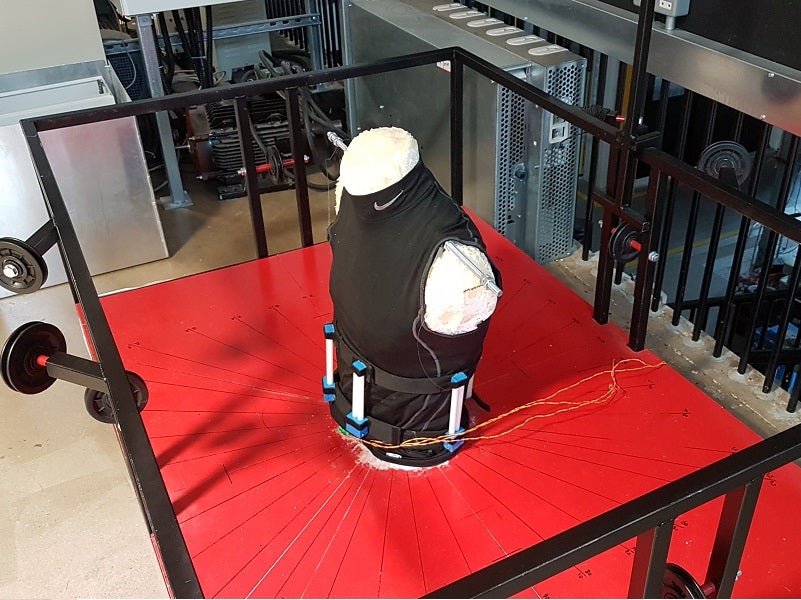
Engineers at the Lancaster University have created a simulator that mimics the mechanics of the human torso, which could lead to innovative new designs for medical back supports.
The simulator is designed to allow researchers to test different back brace designs and configurations without the logistical and ethical issues of testing them on human subjects. The simulator can be configured to present with different spinal conditions and deformities, such as scoliosis.
The male torso-shaped device is manufactured from a 3D-printed spine and rib cage, created using modified CAD models derived from computerized tomography (CT) scans of a human spine. This structure is packed with materials which resemble and behave like human tissues.
Lancaster University researcher David Cheneler said: “Back braces have been used as both medical and retail products for decades, however existing designs can often be found to be heavy, overly rigid, indiscreet and uncomfortable.
“Our simulator enables new back braces to be developed that are optimised to constrain particular motions but allowing for other movements. It could also help with the design of braces and supports with targeted restriction of movement, which would be beneficial to some conditions and helping to reduce the risk of muscle loss.”
Clinicians can use the torso to collect data on the reduction of flexion, extension, lateral bending and torsion each new back brace design provides for different conditions.
The research team acknowledged that the device would not be able to bypass human testing for new back braces entirely, but would allow them to reach human testing at a far more advanced stage of design. This could potentially reduce the pain and discomfort experienced by testers, as they would be testing more sophisticated devices.
Lancaster University graduate Jon Harvey, who worked on the project, said: “This is an excellent example of how engineering research can have wide-reaching impact, not only in industry, but also in the quality of life of a population.”



